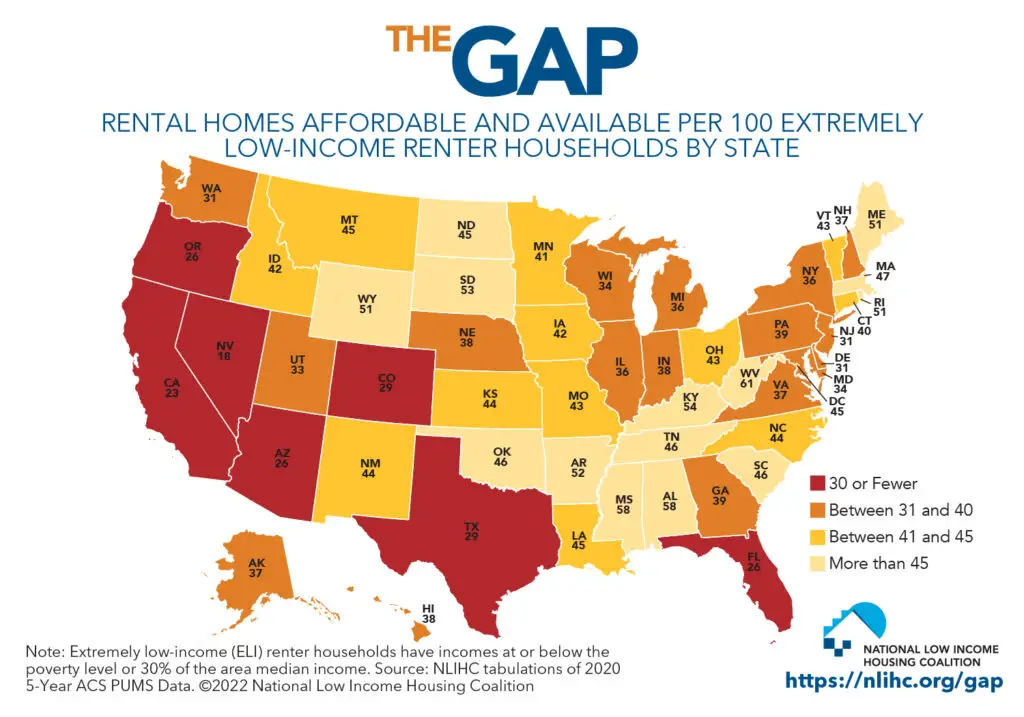
Image © nlihc.org
The longstanding truth of the affordable housing crisis is that there are just not enough affordable homes available for renters with the lowest incomes.
An annual report from the National Low-Income Housing Coalition has revealed once again that the U.S. lacks millions of apartments affordable to extremely low-income renters.
Millions of renters cannot find affordable places to live
The report, titled The Gap: A Shortage of Affordable Rental Homes, found that extremely low-income renters nationwide faced a shortage of about 7 million affordable homes.
This means that there are only 36 affordable homes for every 100 renter households with extremely low incomes.
Renters with extremely low incomes earn less than 30% of the area median income. An apartment is affordable if rent and utilities are 30% or less of monthly income.
Each year, The Gap report analyzes the most recent American Community Survey data from the Census Bureau. The report looks at the number of extremely low-income households around the country and the number of apartments that they can afford.
Renters with the lowest incomes are burdened by high housing costs
The lack of affordable housing is driving rents up all around the country. Extremely low-income renters end up using much of their income just to keep a roof over their heads.
Seventy-one percent of extremely low-income renters are severely cost burdened, which means that they pay more than half of their income for rent and utilities.
Extremely low-income households make up 72% of all severely cost burdened renters. This means that the vast majority of any renters paying more than half their income for housing have extremely low incomes.
The pandemic has not been kind to renters with the lowest incomes. In March 2022, 20% of renters earning less than $35,000 were behind on their rent. This is 69% of all U.S. households behind on rent.
Who are extremely low-income renters?
There are 11 million renter households with extremely low incomes. They are a quarter of all renter households, and about 9% of all U.S. households.
People of color are much more likely than white people to be extremely low-income renters. While 6% of White households are renters with extremely low incomes, 20% of Black households are extremely low-income renters. Also, 18% of Native American households, 15% of Latino households, and 10% of Asian American households are renters with extremely low incomes.
Extremely low-income renters are overwhelmingly seniors, persons with disabilities, working people, and single parents. Seniors or persons with disabilities make up 46% of extremely low-income renters; and 44% of extremely low-income renters are in the labor force, in school, or single-adult caregivers.

